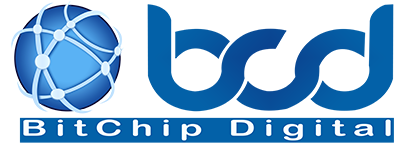
In the early weeks of a startup, every hire, tool, and feature competes for budget and attention. Yet, two assets quietly determine whether you will scale or stall: a well-built website and disciplined search engine optimization. Together they form the storefront, the megaphone, and the analytics hub that will fuel growth long after launch day.
In the article ahead, you will learn how to move from a blank canvas to a high-performing site that attracts qualified visitors and converts them into paying customers. We will walk through each stage — planning, coding, content, on-page tweaks, technical safeguards, and continuous measurement — so you can align SEO and web design with your wider product and marketing roadmap.
Stage 1: Strategy and Planning
Before the first line of code, gather the founding team and answer three questions:
- Who is the primary audience and what problems do they need solved?
- What goals must the site achieve in its first 3, 6, and 12 months?
- How should the information architecture mirror those goals?
This exercise sounds obvious, yet many founders rush past it. Defining personas early informs navigation labels, URL patterns, and the semantic hierarchy that search crawlers read long before humans land on the page.
Keyword research is equally important at this stage. List the phrases your market already uses; cluster them by intent (research, comparison, purchase); then assign them to future pages so you never shoehorn keywords after launch.
By treating planning as the first act of SEO and website development, you avoid expensive retrofits later and create a blueprint that designers, copywriters, and engineers can all follow.
Stage 2: SEO-Friendly Web Development
With the blueprint locked, the engineering sprint begins. A mindset sometimes called developer SEO keeps user experience and crawlability in the same pull request:
- Fast loading: Compress images, enable HTTP/2, adopt server-side rendering or static generation where feasible.
- Mobile-first: More than half of global traffic is now mobile; Google’s mobile-first indexing treats a responsive layout as table stakes.
- Clean, semantic HTML: <header>, <main>, <article>, and <footer> tags help assistive tech and search bots understand topical boundaries.
- Caching and lazy loading: Ship only the assets required for the first viewport; fetch the rest when needed.
These patterns blur the old silos between front-end craft and back-end performance. When code is clean, structured, and quick, search bots reward you with deeper crawls and better rankings, while users reward you with longer sessions and more conversions. That synergy is the heart of SEO and web design done right.
Stage 3: Content as an SEO Tool
A website without content is a storefront without merchandise. Blog posts, landing pages, and resource hubs signal topical authority, but multimedia often lifts engagement even further.
Product explainers, customer interviews, and how-to demos delivered as short clips can raise average on-page time and shrink bounce rate. If you add timer to video elements — countdowns before a demo reveal, for instance — you can create subtle urgency that nudges viewers to the “Start free trial” button just as the video ends.
Remember that every asset should answer a user question with clarity and empathy. Map core keywords to pillar articles, then branch into FAQs and comparison pieces. Include transcripts and ALT text, so search engines grasp the context of both visuals and voice.
Over time, consistent publishing turns your site into a knowledge base that search algorithms — and skeptical buyers — trust.
Stage 4: On-Page SEO Essentials
Once pages exist, fine-tune the elements that machines parse in milliseconds:
- Headings: One descriptive H1 per page, followed by H2 and H3 subtopics that mirror your keyword clusters.
- Meta titles and descriptions: Write them for clicks, not just keywords — snippets set expectations in the results page.
- URL slugs: Short, readable paths (e.g., /pricing/startup-plan) convey hierarchy to both users and crawlers.
- Internal links: Thread related articles together with descriptive anchor text, so authority flows naturally.
The importance of these micro-optimizations compounds over dozens of pages. A systematic checklist helps your SEO-webdesigner pair aesthetics with precision, so that style sheets never hide critical tags and JavaScript never blocks crawlers.
Stage 5: Technical SEO
Even flawless copy and lightning-fast pages can languish in obscurity if bots cannot index them. Safeguards include:
- XML sitemaps: Submit them to Google Search Console so new URLs are discovered quickly.
- robots.txt: Explicitly allow or disallow paths, rather than relying on defaults that might have changed.
- Canonical tags: Declare the preferred source when similar content spans multiple URLs, preventing dilution.
- Core Web Vitals monitoring: Metrics like Largest Contentful Paint (LCP) and Cumulative Layout Shift (CLS) now feed directly into ranking systems.
A periodic crawl with Screaming Frog or Sitebulb flags broken links, orphaned pages, and duplicate H1 tags before they snowball. Technical hygiene is rarely glamorous, but its absence can cripple a business that depends on organic discovery.
Stage 6: Analytics and Continuous Optimization
Launch is a milestone, not a finish line. Open Google Analytics or Matomo and pin dashboards that track:
- Traffic sources: Organic vs. referral vs. paid.
- User behavior: Session duration, scroll depth, exit pages.
- Conversion events: Sign-ups, checkouts, contact form submissions.
Layer in rank-tracking tools to see which keywords climb, plateau, or slip. Run A/B tests on headlines, hero images, or pricing tables, shipping improvements in two-week cycles.
Refresh aging articles with new statistics or quotes; retire those that no longer serve strategy. Continuous feedback loops let data steer content calendars and development sprints, so resources stay aligned with revenue goals.
Conclusion
From ideation to iteration, the journey outlined above transforms an unseen domain into a growth engine. By embedding search engine optimization into every commit and copy edit, startups leapfrog older rivals still treating SEO as an afterthought.
Partner closely with a developer SEO specialist or upskill your own team so architecture, content, and measurement reinforce one another. Whether you bootstrap or raise capital, the smartest investment remains a site that loads fast, reads clearly, and answers the precise queries your market types into Google each day. Start now, refine weekly, and watch your rankings — and your revenue — rise from zero to hero.
